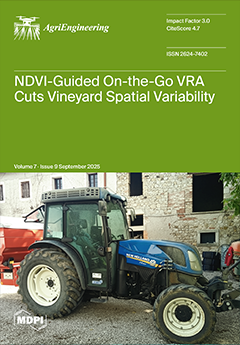The increasing generation of agricultural waste poses both environmental and economic challenges, particularly in rural areas with limited infrastructure. Anaerobic digestion has emerged as a sustainable alternative, enabling the valorization of waste and the production of biogas and biofertilizer. This study evaluated the economic and environmental gains of mono- and co-digestion of equine manure and vegetable waste using biodigesters of different capacities across four simulated projects—Project 1 (15 m
2 biodigester with monodigestion), Project 2 (15 m
2 biodigester with co-digestion), Project 3 (20 m
2 biodigester with monodigestion), and Project 4 (20 m
2 biodigester with co-digestion). Economic feasibility was assessed through indicators such as Net Present Value (NPV), Internal Rate of Return (IRR), Modified IRR (MIRR), Profitability Index (PI), Benefit-Cost Ratio (B/C), Discounted Payback Period, sensitivity analysis, and Monte Carlo simulation, adopting a Minimum Attractiveness Rate (MAR) of 6.43% per year. Environmental benefits were estimated based on the annual reduction of CO
2 equivalent emissions. The results showed that all projects were economically viable and had the potential to mitigate up to 36 tons of CO
2eq per year. Additionally, an eco-efficiency indicator (NPV per CO
2eq avoided) was calculated to enable an integrated assessment of economic performance and environmental impact. Projects using 20 m
3 biodigesters achieved the best results, with Project 3 being the most eco-efficient (USD256.05/tCO
2eq), while Project 4 yielded the highest absolute return in all economic analysis tools: NPV (USD 9063.81), IRR (25.10%), MIRR (10.95%), PI (USD 1.65), B/C (USD 1.65) and DPP (4.56 years). The integrated analysis underscores the significance of co-digestion and economies of scale in encouraging the adoption of this technology by small rural producers.
Full article





